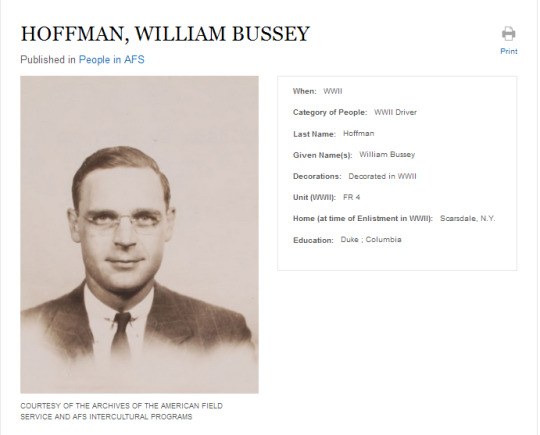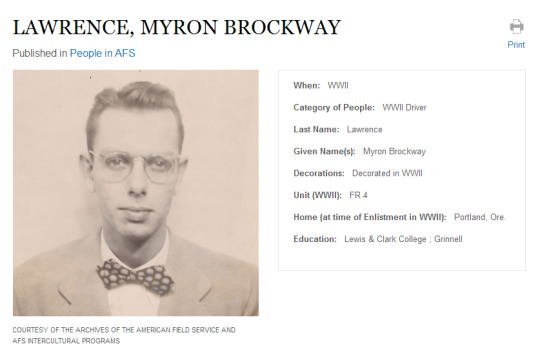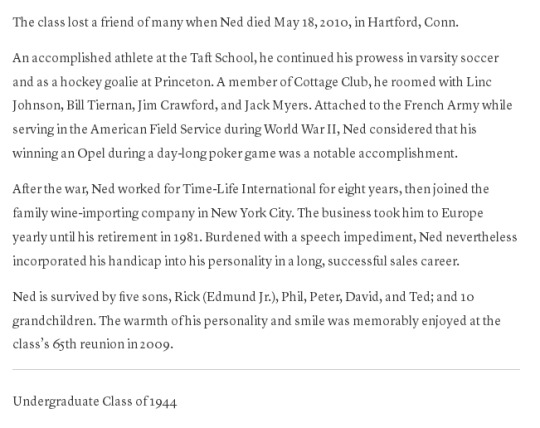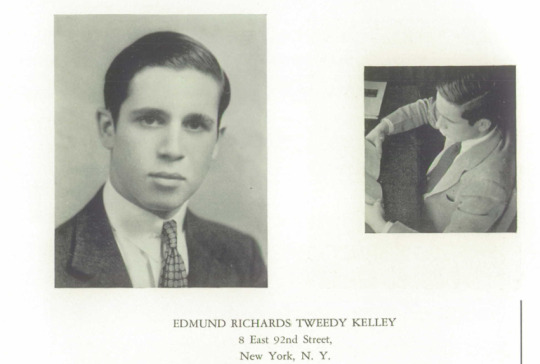#bitschwiller
Explore tagged Tumblr posts
Text












06.09.2023 Cernay FC – US Vallée de la Thur 0:1 Complexe Sportif Daniel Eck (50)
0 notes
Photo

Une fleur de Trèfle des prés ☘ « Trifolium pratense ». ☘ . On parle souvent de ses feuilles et rarement de sa fleur... La fleur du trèfle est un symbole de protection, elle chasse les mauvaises énergies, elle excite notre intuition en procurant plus de clarté, et elle améliore nos réflexes. Portée en amulette elle protègerais des incendies. Cette fleur est également liée à la vie et au pouvoir. Le trèfle est une plante comestible, sa saveur est douce et agréable. Les jeunes fleurs s'ajoutent aux salades ou aux desserts pour un apport supplémentaire en vitamines. Les enfants jouent parfois à sucer les fleurs afin de profiter du nectar que les fleurs libèrent au soleil. Séchées et pulvérisées, on peut mélanger ces fleurs à la farine pour faire du pain. . #InstaPhoto #Spring #Printemps #Nature #Spituality #NaturePhoto #GaiaEsoterica #WilliamSK #Esoterisme #Spiritualite #Wellness #NatureLovers #Photography #Alsace #Fleur #Trefle #CloverFlower (à Bitschwiller-lès-Thann) https://www.instagram.com/p/BvmArPBnopU/?utm_source=ig_tumblr_share&igshid=1dhb0qm6y3zrf
#instaphoto#spring#printemps#nature#spituality#naturephoto#gaiaesoterica#williamsk#esoterisme#spiritualite#wellness#naturelovers#photography#alsace#fleur#trefle#cloverflower
2 notes
·
View notes
Photo

Cap sur la maison. 🙈 Nous avons été contraints de dévier notre route vers l'est à cause d'incendies dans les Vosges : routes et massifs interdits au sud d'Épinal... En cet été de bouleversements, le feu nous aura suivi tout au long de notre périple. #moto #roadtrip #france🇨🇵 #gs800 #gs700 #makelifearide #bmwmotorrad #carpediem (à Bitschwiller-lès-Thann) https://www.instagram.com/p/ChPWvEfoGL1/?igshid=NGJjMDIxMWI=
0 notes
Text
Let’s be history detectives...
(Episode 2! aka This Ended Up Longer Than I Intended and I Apologize)
Since I seemed to get some interest (and a lot of really amazing feedback) the last time I did this, I thought I would document and share another “history detective” project I’m working on.
Today’s project is this date book from 1945 kept by an ambulance driver working at the front along the Rhine in the last days of WWII.

This diary is an interesting one because, while it was very sporadically updated, its few entries are very long, very well written and contains some of the most compelling storytelling I’ve ever come across in a diary. All while mentioning hardly any personal information about our diarist! (Because why make it easy for me?)
The diary begins with one 22 page entry written on March 25, 1945.
The beginning of this entry states...
“With the New Year come resolutions and mine are to be in the form of keeping a diary. I wish that before I left New York I had picked up one of the same, for now, on March 25th, that I try to begin this record, most thoughts and experiences are old.”
This first entry covers events from December 1944 through March 1945 and ends in mid-sentence (”I had been scared never so much in my life. No one was asleep...”).
There are then 4 scattered entries throughout March and April and then the diary skips nearly seven months with no entries from April 20th to October 9th.
After picking back up on October 9th there are detailed daily entries through November 7th which tell of our diarist’s life working in Paris after the war, and then four entries in December. The last of which (December 18th) ends “Oh! Well! Life is at least interesting.”
Let’s see if we can track this guy down (as well as share some of his amazing stories from WWII and life in 1940s Paris)...
First off I just want to give an example of our diarist’s amazingly vivid storytelling, which is unlike any other diary I’ve ever come across...

“Evacuations came at all hours of the day or night and we drove over snowbound roads wide enough only for one car. The drifts piled four and five feet high on either side of the road and after a four or five hour trip to Hericort our hands were blistered with holding the wheel steady when driving.
Prestone [anti-freeze] finally came for the car radiators and this allowed us more time to sleep in the morning, less grease on our hands, less time spent in washing up, and a hell of a lot of work on the cars besides.
Rumors were rampant of a big push and we knew it was true when three of our ambulances went up to Bitschwiller. From Masevaux the distance was eleven miles; the time it took to make the trip, with patients, two hours and a quarter. Conditions for driving were the worst imaginable. The road was covered with glare ice; off to one side was a drop, ranging anywhere from twenty to five hundred feet. There was no fence or marker to warn a driver of a particularly bad turn or an especially long drop. Most of the time it snowed and occasionally the storm was a blizzard, blanketing the windshield of every car and gumming up the wiper.
The road was built with a horse and wagon in mind; there was hardly room in spots for one car. At night we blacked out our headlights on one side of the mountain for we were directly under observation by the Jerries. Our average speed was perhaps seven miles per hour, and I for one drove the whole way in first gear...”
As you can see, despite our diarist’s gripping stories and wonderful writing style, there are virtually no hints as to who was writing this, other than an ambulance driver in Eastern France during WWII.
He very seldom talks about other people in any sort of specific way, and in fact the entire first 22 page entry contains no names whatsoever.
When people are mentioned it is usually in connection with a larger story he is telling. For example: he mentions another driver in his unit is from Portland, only because they run into a medical unit from Portland who knows him and invites them to join the unit’s New Year’s Eve celebration.
He does talk about himself occasionally, but most often in a very introspective manner. He writes about his feelings and fears, rather than his personal history. One of my favorite examples is him talking about how he crawled into his sleeping bag when they were being shelled because it felt safer for some reason.
He mentions becoming desensitized to the violence around him, but shares several examples of cases that still got to him, including a French soldier who survived fighting in North Africa only to die in a car crash on his way back to his family in Paris and a graphic description of an American soldier hit by an anti-personnel mine.
He also often talks about the fact he has a stutter, and how self conscious it makes him.
In the later part of the diary, once he is living in Paris, his entries become much more typical and mention a few names of friends and co-workers and descriptions of his work that may prove helpful. This is where most of our clues are going to come from, but let’s see if there is anything useful hidden among the stories in the first 22 pages.
The clues...
“our unit of 89 AFS men left New York in middle November”
The first and most important detail is that our diarist was not in the army, but in the “AFS” or American Field Service. The AFS was an organization founded in WWI, which allowed men who were not eligible for army service (usually for health reasons) to serve as ambulance drivers and stretcher carriers at the front.
“This town [Marseille] has a reputation of being rough and dirty, a sailor’s port, or so I remembered from my previous trip to France in ‘36.″
Our diarist traveled to France (and presumably back to the US, most likely New York) in 1936. If you read my first “Let’s be history detectives” you may recall that 1930s civilian passenger records were how I solved that case.
“Most of us were in our early 20s, however, just out of college or just entering... a generalization could be made that most came from well-to-do families and were educated in the best schools.”
If our diarist is included in “most of us”, he is likely in his early 20s, comes from a well-to-do family and is well educated. All of this seems to fit with my general impressions of his writing style and a few comments he made about their accommodations, which lead me to believe he is not used to roughing it.
Moving on from the first entry... his account for April 19th, contains the first full name “Bill Hoffman”, who is mentioned as having captured a German prisoner. Unfortunately there is no indication as to whether Bill Hoffman is in our diarist’s AFS unit, or is just a random soldier, and the name itself is too common to be of much use without context. But it’s still worth noting.
After seven blank months the diary picks back up on October 9th to find our diarist living in Paris and hunting for an apartment. He mentions visiting a friend named Brock Lawrence to see what his apartment is like. After a few entries he and Brock decide to get a larger apartment and move in together.
He talks about the night life in Paris (including the fact that there are only 3 nightclubs he can afford) and mentions the names of a few friends he goes out with.
He talks quite a bit about his job, while never stating exactly what he does. However there are plenty of clues to narrow it down...
He mentions editors and printers, delivery and distribution orders, and his entry for October 20th states, “The magazines must be run around to the important Army people and must be seen in the right place. I am the guy who does it.”
So he appears to have been working for a magazine publisher/distributor/printer in Paris.
One of his jobs was “picking up the film at Orly” and one entry states that “Newsweek and I had a race to the printers with the film. Newsweek arriving first since its plane came in twenty minutes ahead of mine.”
If he was picking up film at Orly, that means the publication he works for was likely an international news magazine, and probably a sizable and successful one if they were having film flown in to an international airport on a daily basis. The rivalry with Newsweek seems to confirm this.
The last piece of information that seems to verify this is a mention of the company offices moving to 4 Place de la Concorde. Place de la Concorde is right in the heart of Paris and would not have been a cheap place for an office.
Other interesting miscellaneous facts about our diarist found in the latter half of the diary include...
He mentions considering going back to Princeton, so presumably he attended there before the war.
He was sending a large portion of his salary to a bank account in New York City. This, along with a few other comments, makes me think he is probably a New Yorker.
So who are we looking for???
An AFS ambulance driver who served in France in 1944 and 1945.
His AFS unit had someone from Portland, Oregon in it and may have had a member named Bill Hoffman.
He was likely in his early 20s.
He was likely from a wealthy background.
He attended Princeton.
He likely lived New York City prior to the war.
He had previously been to France in 1936.
His roommate in Paris was named Brock Lawrence.
After the war he worked for a large international news magazine which had offices at 4 Place de la Concorde in Paris.
All in all this is honestly not a lot to go on, but it’s better than nothing. So let’s dig in...
So right away I hit the jackpot. It turns out that the AFS has an extensive online archive/virtual museum.
I decide to try a shot in the dark and see if there’s a Bill Hoffman listed in the archives. Turns out there are actually a few, but only one who served in France as an ambulance driver during WWII.

He certainly fits the well-to-do and well educated description. His unit was called “FR 4″. I decided to go through the rest of the members of the unit to see if anything stuck out to me, and look who I found...

Myron Brockway Lawrence, who presumably went by Brock! Our diarist must have known Brock from his time in the AFS. And even more interesting, Brock is from Portland, Oregon, just like the AFS member in the New Year’s story. The only person besides Bill Hoffman who is mentioned in any detail.
It’s looking more and more like we’re looking for someone who was in the FR 4 unit.
Considering how many people were in the unit, I’m going to try to narrow down our suspects a bit.
Going through the details in their biographies I find seven individuals in FR 4 who attended Princeton, and then immediately eliminate three of those for not fitting our profile (one for age, and two for having served elsewhere in the world prior to serving in France whereas our diarist makes it pretty obvious that this is his first tour).
So now, in an amazingly short amount of time, we’re already have four good candidates who might be our guy...
Donald Neil Elberfeld of Short Hills, NJ
Henry Robertson Fenwick of Glyndon, MD
Edmund Richards Tweedy Kelley of Darien, CT
James Henry McEwen Jr. of Burlington, NC
I decide to see if any of these gentlemen happened to have traveled across the Atlantic in 1936. If you recall from my previous case, just like with immigration and customs today, everybody who entered the US in the 1930s was recorded. Most of those documents are now public record and are available through various websites, some for free, but most cost money to access.
After running searches for all four men (including alternate spellings and nicknames because passenger records are notoriously inaccurate) I end up with only one result...

An eleven year old Edmund Kelley arriving in New York City on the S.S. Manhattan from Southampton on September 3, 1936!
Ships leaving the French port of Le Havre often stopped in Southampton or Cobh to pick up additional passengers before heading back across the Atlantic, so this would definitely fit someone returning from France. (It’s also possible the family traveled in England as well and was just returning directly from there.)
Let’s go down our “Who are we looking for?” list and see how we’re doing...
An AFS ambulance driver who served in France in 1944 and 1945.
✓
His AFS unit had someone from Portland, Oregon in it and may have had a member named Bill Hoffman.
Bill Hoffman was in his unit, as was Brock Lawrence who was from Portland ✓
He was likely in his early 20s.
The birth date listed on his passenger records would make him 19/20 when the diary was written. ✓
He was likely from a wealthy background.
His address on the passenger record is listed as “8 East 92nd Street” in New York City. Google Maps places this address as less than a block away from Central Park, so I think that’s a pretty safe ✓ on the being wealthy thing.
He attended Princeton.
✓
He likely lived New York City prior to the war.
✓
He had previously been to France in 1936.
✓
His roommate in Paris was named Brock Lawrence.
I can’t prove they were roommates, but they definitely knew each other. So ✓-ish.
After the war he worked for a large international news magazine which had offices at 4 Place de la Concorde in Paris.
this is the only piece I haven’t been able to confirm yet
It’s looking pretty darn good that Edmund Kelly is our diarist, but I’d like to be as close to 100% positive as possible. Let’s see if we can find out a bit more about Edmund and make our case sounder.
The great thing about people who went to college in the first half of the 20th century is that alumni associations were serious business. Most major universities published regular alumni magazines letting people know what former students were up to, and held yearly reunions. So our next stop is the website for Princeton’s alumni association.
And it takes me less than 30 seconds to check the last item off our list...

Edmund, who went by Ned, worked for Time-Life (a very large, very successful international news magazine) for eight years after the war.
I hadn’t been able to find any records of what was located at 4 Place de la Concorde, but combining the address with “Time-Life”, I find a few references that confirm the location. As well as a photo taken from the office. Pretty nice view...

So that’s a ✓.
To add another (entirely unexpected) nail in the coffin of this case, his obituary happens to mention two other tidbits that match up with details from the diary...
“Burdened with a speech impediment, Ned nevertheless incorporated his handicap into his personality in a long, successful sales career.”
Remember how I mentioned our diarist’s frequent mentions of his stutter? Who would have thought that would be mentioned in his obituary?
The other fun tidbit is...
“Ned considered that his winning an Opel [a German car popular in France] during a day-long poker game was a notable accomplishment.”
Our diarist mentions playing poker all the time and, while he never specifically brings up any particular winnings, later on when he is in Paris there is a passing mention to him having some extra cash that month from selling “the car”.
I’m convinced we have our guy!
Meet Ned Kelley (no, not that Ned Kelly)...

This project took me two or three hours (most of it reading the diary) and honestly turned out to be A LOT easier than I had originally expected thanks to the amazing archives of the American Field Service. Everyone go hug a local archivist!
Random extra trivia... Ned’s brother Solon aka Sollie, not Sopon like the passenger manifest says (like I said, they’re notoriously inaccurate) was a fighter pilot in WWII and I found this pretty kickass picture of him on the American Air Museum in Britain website.

#history#research#wwii#historical research#1940s#let's be history detectives#diaries#paris#Sam collects too many things#sam writes
314 notes
·
View notes
Photo

M-à-j Les #BARXELL d’#Argentine: le cahier. #Alsace #Vosges Depuis le premier jet de cette tentative de reconstitution de l'histoire de cette famille, de nouvelles données sont venues l'enrichir.
#Albert Gautier#Alexandre Marie Guégan#Alsacianos#Argentine#Émigration#Barcsell#Bargsell#Barsull#Bartholomée Bonesio#Barxell#Barxelles#Barxll#Bitschwiller-lès-Thann#Brenner#Buones Aires#Camille Wurm#Ferdinand Mattmann#Jacques Mayer#Joseph WENK#Korb#Lutterbach#Marie Louise Aeberlé#Melchior-Alcide Febvrel#Nicolas MARTIN#Peter#Pfohl#Pouxeux#Rio Cuarto#Rio Negro#Rouffach
0 notes
Text
La « love baguette » pour mettre fin au sida - DNA - Dernières Nouvelles d'Alsace
La « love baguette » pour mettre fin au sida – DNA – Dernières Nouvelles d’Alsace
La ” love baguette » pour mettre fin au sida DNA – Dernières Nouvelles d’Alsace … Bischwiller, Saverne, Lampertheim, Geudertheim, Still, Ottrott, Strasbourg, Sélestat, Ostheim, Wintzenheim, Colmar, Muntzenheim, Soultzmatt, Issenheim, Burnhaupt-le-Haut, Morschwiller-le-Bas, Wittelsheim, Cernay, Bitschwiller-lès-Thann, Illzach …
et plus encore
» Lire la suite…
View On WordPress
0 notes
Photo

🍁 Ce qu'il y a parfois de beau avec l'automne, c'est lorsque le matin se lève après une semaine de pluie, de vent et de brouillard, et que tout l’espace, brutalement, semble se gorger de soleil. 🍃 🍂 - Victor-Lévy Beaulieu . #Citation #Poesie #Poetry #Autumn #Automne #FeuillesMortes #DeadLeaves #Spirituality #Nature #NatureLovers #GaiaEsoterica #WilliamSK #WriterLife #Writer #Auteur #Spiritualite #Magic #Foret #Forest #BienEtre #Esoteric #Witch #Alsace (à Bitschwiller-lès-Thann) https://www.instagram.com/p/B5LOCDyhRvR/?igshid=4qpen14n9t1t
#citation#poesie#poetry#autumn#automne#feuillesmortes#deadleaves#spirituality#nature#naturelovers#gaiaesoterica#williamsk#writerlife#writer#auteur#spiritualite#magic#foret#forest#bienetre#esoteric#witch#alsace
0 notes
Photo

🍁 En automne il n'est pas rare de croiser quelques fongus cachés entre les lichens 🍄 Cette saison est merveilleuse, les couleurs, les odeurs, tout y est magique ✨ 🍂 ✨ Bon Dimanche à toutes et à tous 🙏 ❤ . #Nature #NatureLovers #NaturePhotography #Forest #Mushrooms #Autumn #Esoterism #Magic #Spirituality #Wellness #WriterLife #Writer #GaiaEsoterica #WilliamSK #PhotoNature #Foret #Champignons #Automne #Esoterisme #Spiritualite #DeveloppementPersonnel #Magie #Alsace (à Bitschwiller-lès-Thann) https://www.instagram.com/p/B312eBDBOeO/?igshid=sa70g62bl96o
#nature#naturelovers#naturephotography#forest#mushrooms#autumn#esoterism#magic#spirituality#wellness#writerlife#writer#gaiaesoterica#williamsk#photonature#foret#champignons#automne#esoterisme#spiritualite#developpementpersonnel#magie#alsace
0 notes
Photo

🌷 La Digitale Pourpre 🎋 En 1543, Leonard Foux fait la première description de la digitale dans un herbier. En 1835, les chimistes étudient la digitale. En 1844, Claude Adolphe de Nativelle, pharmacien français, qui en 1825 avait vu sa mère terrassée par une crise cardiaque, isole le principe actif de la digitale après 32 ans de recherches. La grande digitale est traditionnellement, LA fleur protectrice du foyer. Elle veille sur le jardin si elle y pousse, ainsi que sur la maison et ses habitants. Au pays de Galles, les femmes tirent des feuilles et des sommités fleuries une teinture noirâtre, avec laquelle, elles peignent, deux fois l’an, le 1er mai et la veille de la Toussaint, le sol de leur chaumière. Elles ne badigeonnent pas tout le carrelage, mais passent leur teinture sur les joints entre les dalles. Cette teinture « a le pouvoir de repousser toutes les forces et essences négatives ». La digitale se récolte au moment de la floraison, afin d’éviter de la confondre avec d’autres plantes. Ses autres noms ou synonymes : Gant de Notre-Dame, Gant de bergère, Gantelée, Gant de renard (« foxglove » en anglais), Doigtier, Gantière, Gantilier, Grande Digitale, Digitale commune, Queue de loup, Pavée, Dé de Notre-Dame, Gandio, Péterolle, Gobe-mouche. 🌳 . #Nature #NaturePhotography #NatureLover #Flowers #Forest #Wellness #Spirituality #Esoteric #Writer #WriterLife #GaiaEsoterica #WilliamSK #Fleur #BienEtre #Spiritualite #Esoterisme #Witch #WitchCraft #GreenWitch #Alsace (à Bitschwiller-lès-Thann) https://www.instagram.com/p/BzApV8vh4d2/?igshid=17p4g7qu7z4qy
#nature#naturephotography#naturelover#flowers#forest#wellness#spirituality#esoteric#writer#writerlife#gaiaesoterica#williamsk#fleur#bienetre#spiritualite#esoterisme#witch#witchcraft#greenwitch#alsace
0 notes
Photo

« Renouer avec la nature, c'est satisfaire des besoins physiques immémoriaux (l'eau pure, des plantes pour se nourrir et se soigner, des matériaux pour édifier des habitats...), mais aussi physiologiques, esthétiques, émotionnels, ou spirituels. » Extrait du livre « Se régénérer grâce à la nature » de Pascale d'Erm aux éditions Ulmer. . #Photography #NaturePhotography #Wellness #Spirituality #Alsace #Citation #ExtraitLivre #Livre #Bookstagram #Book #Writer #Nature #GaiaEsoterica #WilliamSK #BienEtre #Serenity #Flower #Fleur #NatureLife #NatureLovers (à Bitschwiller-lès-Thann) https://www.instagram.com/p/BwE-48UDs8j/?utm_source=ig_tumblr_share&igshid=146mejnsjksp0
#photography#naturephotography#wellness#spirituality#alsace#citation#extraitlivre#livre#bookstagram#book#writer#nature#gaiaesoterica#williamsk#bienetre#serenity#flower#fleur#naturelife#naturelovers
0 notes
